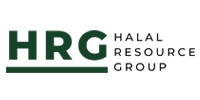By: Amna Puri-Mirza | Statista.
Practicing Muslims worldwide navigate almost all aspects of their daily lives between the boundaries of “halal” (Arabic for allowed) and “haram” (Arabic for forbidden). The classification of what is halal or haram is based on the Islamic teaching of the Quran and Shariah law. While certain rules are quite clear (like the prohibition of consuming pork or alcohol), other rules are open for debate and personal interpretations (such as the appropriate dress code). Practicing Muslims consider living a ‘halal’ conforming lifestyle as crucial as fasting during Ramadan or performing the Annual Hajj pilgrimage to Mecca.
The Muslim Consumer
There are over 1.6 billion Muslim people in the world. Although most Muslims live In Asia, the Middle East, and Africa, many Muslim communities exist in Europe, North America, and Australia. The global halal market is worth over two trillion U.S. dollars and is estimated to grow to 2.8 trillion U.S. dollars in the coming years. Although food and beverages are commonly associated as prominent segments of the Muslim consumer markets, the Islamic financial sectors lead in the halal segment in terms of value. According to Islamic law, it is haram to…

